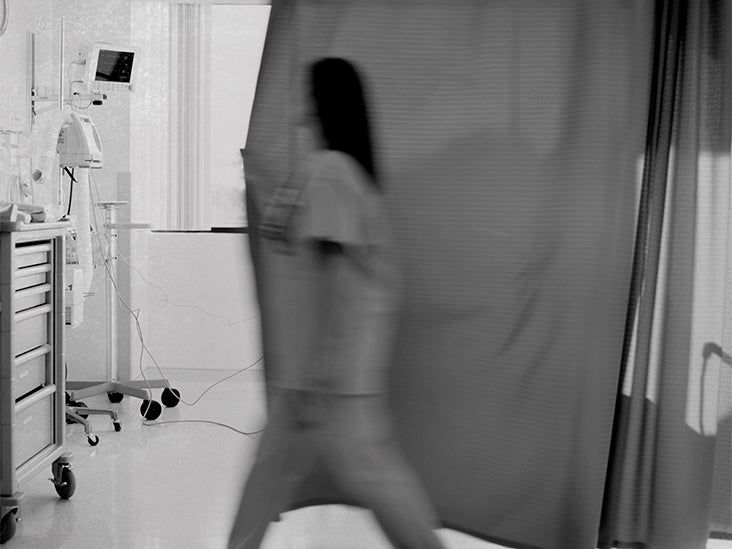
- A new analysis suggests that hospital-acquired, antibiotic-resistant infections increased in the United States during the pandemic.
- The spike in antibiotic resistance in hospitals was particularly high among patients with COVID-19.
- The researchers speculate that increased antibiotic prescribing and reduced infection control during the crisis may be partly responsible.
- By contrast, the frequency of resistant infections that originated in the community appeared to decrease during the pandemic.
Over time, bacteria and other microorganisms can evolve resistance to
In 2019,
Overprescribing of antibiotics and poor infection control promote the development of drug resistance.
There have been concerns that increased antibiotic use to treat secondary infections associated with COVID-19 has accelerated the development of AMRs, but direct evidence has been lacking.
According to a new U.S.-based study, the pandemic increased the rate of hospital-acquired AMR infections compared with pre-pandemic levels.
The authors reported their findings to this year’s European Congress of Clinical Microbiology & Infectious Diseases (ECCMID), which took place April 23rd — April 26th in Lisbon, Portugal.
The researchers compared the rate of AMR infections in 271 U.S. hospitals between July 1, 2019, and February 29, 2020, with the rate between March 1, 2020, and October 30, 2021.
The total number of hospital admissions increased from 1,789,458, in the pre-pandemic period, to 3,729,208 during the pandemic. The number of admissions with at least one AMR infection was 63,263 and 129,410, respectively.
Overall, the AMR rate was 3.54 per 100 admissions before the pandemic and 3.47 per 100 admissions during the pandemic.
However, the rate was 4.92 among patients who tested positive for SARS-CoV-2, which is the virus that causes COVID-19.
Among those who tested negative for SARS-CoV-2 the rate was 4.11, whereas the rate was 2.57 among those who did not receive a test.
The researchers also investigated if the patients developed their infection before or after they were admitted to the hospital.
They defined infections that were cultured in the hospital lab 2 days or less after admission as “community-onset,” and those cultured more than 2 days after admission as “hospital-onset.”
There was a decline in the community-onset AMR rate, from 2.76 before the pandemic to 2.61 during the pandemic.
Among patients whose infection began in the hospital, however, the AMR rate increased from 0.77 to 0.86.
The hospital-onset AMR rate was highest among those who tested positive for SARS-CoV-2, at 2.18 for every 100 admissions.
“This is probably a reflection of multiple factors during the pandemic, including the potential higher severity of illness for COVID-19 patients, longer hospital length of stay, and infection control and antimicrobial stewardship practices, particularly early in the pandemic,” said one of the authors, Dr. Karri Bauer, a pharmacist working with the pharmaceutical company Merck.
Dr. Bauer told Medical News Today that as the pandemic proceeded, clinicians gained a better understanding of which patients were at risk of developing bacterial infections.
“It is always important that infection control and antimicrobial stewardship are optimized to minimize hospital-associated infections,” said Dr. Bauer.
“It is imperative to continue to evaluate AMR and determine strategies to mitigate this global health threat,” she added.
Dr. Aaron E. Glatt, chair of the department of medicine and chief of infectious diseases at Mount Sinai South Nassau in Oceanside, NY, said he believes a surge in antibiotic prescribing in hospitals during the pandemic contributed to the increase in resistance.
“There are potentially long-term consequences if this is not addressed,” said Dr. Glatt, who was not involved in the study.
“Certainly, our knowledge of COVID-19 has tremendously improved and it is not necessary to normally prescribe antibiotics for the treatment of new COVID-19 infection,” he told MNT.
He added that other factors probably contributed to the increase in resistance during the pandemic, including longer hospital stays, and secondary bacterial and fungal infections in patients with severe COVID-19.
High use of steroids and other immune-suppressing agents may also have played a part, said Dr. Glatt.
“I think there are many lessons that physicians can learn from this pandemic that could mitigate resistance development in future outbreaks,” he said.
Physicians should not prescribe antibiotics when there is no clear evidence that they are needed or beneficial, said Dr. Glatt, who is a spokesperson for the Infectious Diseases Society of America:
“[W]hile it is very difficult to watch and do nothing for a very sick patient, sometimes it is actually preferable to do nothing than to provide inappropriate therapy because you are desperate. A basic rule of medicine remains — Primum non nocere — first, do no harm.”







More Stories
Heart-healthy habits linked to longer life without chronic conditions
Hoda Kotb Returns To TODAY Show After Handling Daughter’s Health Matter
Exercise 1.5 times more effective than drugs for depression, anxiety